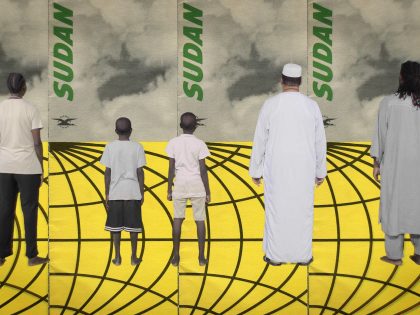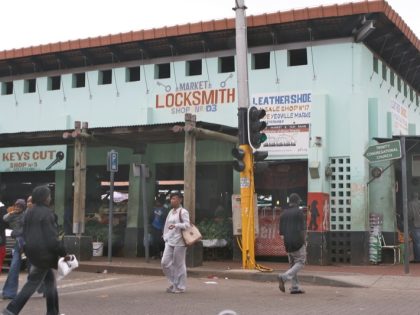The hierarchy of refugee stories
In sharp contrast to the coverage of Syrian refugees, Western media barely register the escalating Eritrean refugee crisis.

Credit: Samout3 (Flickr CC).
Three hundred refugees and migrants are now missing and feared dead after trying to cross the Mediterranean over the weekend from Libya to Italy on rubber dinghies. According to the latest news reports, the majority of the refugees were from sub-Saharan Africa.
Stories about Syrian refugees dominated the mainstream U.S. and Western English-language media over the past year. Reporters covered the lives of individual refugees struggling to adjust in camps and European cities, while also examining everything from the international aid response to the architecture of refugee camps.
In 2014, at least 40,000 Syrians crossed the Mediterranean to seek asylum in European countries via Italy. But approximately 35,000 Eritreans also made the voyage – a sharp increase from 10,000 in 2013. More Eritreans have also entered refugee camps in Ethiopia and Sudan, the majority between the ages of 18–24, and a significant number of unaccompanied children under the age of 18. Young Eritreans are fleeing mandatory and indefinite military conscription and imprisonment and torture for political organizing; there are also reports of growing famine.
Yet in sharp contrast to the coverage of Syrian refugees, the Western English-language media has barely registered the escalating Eritrean refugee crisis. There have been few in-depth stories; absent profiles of Eritreans struggling to re-build their lives abroad; and rare editorials condemning the international community for not accepting more Eritrean asylum seekers or for failing to rescue Eritreans who are held hostage and brutally tortured in the Sinai.
There are several reasons for this discrepancy: the Syrian war has forced 3 million people to leave the country and created an unprecedented flow of people into neighboring countries; it rightfully deserves significant and ongoing coverage. But the other reasons are about history, politics and power – the Middle East has received increased Western media coverage in the post-9/11 era. As a result, there’s a media infrastructure; some of the main Syrian refugee camps are housed in countries where there were already bastions of foreign correspondents, and it’s relatively easy for Western journalists to travel from Istanbul and Amman to camps along the borders of Turkey and Jordan.
In contrast, most Eritrean refugees flee first to Ethiopia or Sudan, both countries where there are few journalists reporting for the Western press. Neither country is particularly welcoming to journalists, but Ethiopia’s draconian press laws mostly target local reporters, and accessing the refugee camps in the Northern Tigray region is not difficult – there are daily flights from Addis’s Bole Airport. Ethiopia now hosts more refugees than any other African country, yet most coverage of issues in the camps comes from the press offices of relief agencies. (As a side note, the fighting in Sudan and South Sudan has recently resulted in huge flows of people across borders as well as into Gambella, Ethiopia; but these refugees also get barely a mention.)
While we’re inundated with the tales of brave war correspondents crossing the border into Syria to capture the atrocities, there is an absence of stories about journalists attempting to infiltrate Eritrea on a similar mission. Eritrea, which once riveted Europe and the US with its independence struggle from Ethiopia, has fallen from the media’s gaze since Isyas Afwerki began constructing his police state in 1993. Eritrea now barely registers in Western consciousness – except of course as it relates to possible support for or against terrorist movements.
The mainstream media’s bias of covering refugee issues more extensively in the Middle East matters. While Denmark, Germany, the Netherlands, Norway, the UK, Sweden and Switzerland have historically granted Eritreans asylum, there are now disturbing political undercurrents as Northern European countries appear on the brink of closing their doors to Eritreans.
In mid-2014, Denmark’s Immigration Service sent a team on a “fact finding mission” to Eritrea, after suspending asylum proceedings due to the increased numbers of Eritrean asylum-seekers. The purpose was to determine whether the situation was really so terrible. In Eritrea, these so-called fact finders primarily spoke to Western Embassy staff; their resulting report in October 2014 claimed that conditions in Eritrea had improved enough to conveniently tighten Denmark’s asylum criteria. The report was so blatantly inaccurate that Human Rights Watch and UNHCR debunked it point by point. The sole academic quoted in the report issued a statement he had been deliberately misquoted and demanding his name be withdrawn. The audacity of Denmark’s Immigration Service is notable – they clearly thought people were uninformed enough about the ongoing crisis in Eritrea to not even notice their inventions.
While the Danish report is now “under revision”, the Afwerki regime is already using it as propaganda. Meanwhile, the UK and Norway are undertaking their own investigations that will have implications on their asylum proceedings. Israel (which houses many Eritreans who survive the journey across Egypt) continues to imprison refugees who cross its borders or forcibly deports them, violating their basic human rights. (As AIAC has noted before, Israel refuses to even call them refugees, instead using the term infiltrators.) In a time when there are more refugees than in the previous 50 years, and as xenophobia and racism manifest in the political parties and policies of many developed countries, we need journalists who cover the lives of all refugees – not just those of geopolitical importance.



















